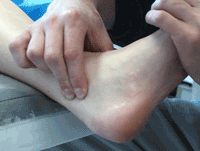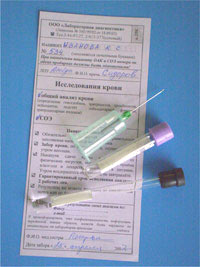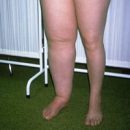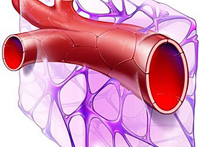«Who diagnoses well, he treats well», - Personal vintage wisdom. To put the DAGNOS Atherosclerosis is not difficult, but it is much more difficult to find the target organ, a kind of appearance of the disease. In our article we will tell about the main stages of the Digosis of Atherosclerosis.
Content
Atherosclerosis diagnosis is a complex and multi-step process. In general, to determine the diagnosis of atherosclerosis is easy – We want this or not, but atherosclerosis is all without exceptions of people who have stepped over a certain age line. Another thing to determine the characteristics of the disease in a particular case, clarify the exact location of the pathological process, to establish the severity of the disease and predict the risks associated with it – it requires a thorough examination. The diagnosis of atherosclerosis begins at the reception at the family doctor, which may suspect the presence of a disease based on the symptoms and data of the general examination of the patient…
General atherosclerosis diagnostics plan
Atherosclerosis diagnostic plan includes several main steps:
-
Finding out the symptoms of the disease and complaints of the patient;
-
General examination of the patient;
-
Establishing the risk factors atherosclerosis and the possibility of their elimination;
-
Laboratory and instrumental methods of diagnostics to confirm the presence of atherosclerosis of the vessels, the establishment of the localization of atherosclerotic plaques, estimates of the state of the internal organs.
-
Finding out atherosclerosis symptoms This is the initial stage of diagnosis, on which, of course, it is still impossible to establish an accurate diagnosis of atherosclerosis.
The main symptoms of atherosclerosis
 Symptoms and signs of atherosclerosis depend on the degree and prevalence of changes in damage to blood vessels, which in turn determines the state of the internal organs. So, the most common symptoms (consequences) of atherosclerosis are: Pain in the muscles of the legs arising when walking, arterial hypertension, attacks of angina, myocardial infarction, or the establishment of heart failure, neurological disorders, including brain stroke, abdominal ischemic disease, renal failure, etc. In other articles on the problem of atherosclerosis of various localization, we have already described the various symptoms of atherosclerosis in detail, which arise when defeating one or another section of the organism vascular system.
Symptoms and signs of atherosclerosis depend on the degree and prevalence of changes in damage to blood vessels, which in turn determines the state of the internal organs. So, the most common symptoms (consequences) of atherosclerosis are: Pain in the muscles of the legs arising when walking, arterial hypertension, attacks of angina, myocardial infarction, or the establishment of heart failure, neurological disorders, including brain stroke, abdominal ischemic disease, renal failure, etc. In other articles on the problem of atherosclerosis of various localization, we have already described the various symptoms of atherosclerosis in detail, which arise when defeating one or another section of the organism vascular system.
At the doctor's reception, it is important to mention all the available symptoms and violations. It is possible that atherosclerosis develops in parallel with another disease, and the available symptoms are the result of the action of both diseases. Finding out the symptoms and complaints of the patient helps the doctor suspect possible complications of atherosclerosis or point out the possible localization of the disease, which significantly narrows the circle of further surveys.
Inspection of the patient
The overall inspection of the patient with atherosclerosis can help identify some signs indicating the presence of a disease: wen on the skin of the face and the whole body, abundant hair growth in ear sinks, hair loss and deformation of the nails on the legs. These signs, though they are minor, still deserve attention. Also, with a general inspection of the patient, various signs of damage to internal organs may be seen (the presence of edema, weight loss).
The total inspection of the patient ends with listening (auscultation) and palpation (palpation) of internal organs that provide a doctor in valuable information on the state of the patient's internal organs. In the benefit of atherosclerosis, such signs are indicated as: an increase in the pulse on the peripheral arteries, the detection of systolic noise while listening to the heart, an increase in blood pressure and.
Setting the risk factors atherosclerosis
Setting the risk factors atherosclerosis is an important stage of diagnosis that determines the tactics of the upcoming treatment that will be directed to the elimination of risk factors. Atherosclerosis risk factors we have already described in the article «What do we know about atherosclerosis». It is important to identify hypertension, diabetes, obesity, bad habits and other factors that contribute to the accelerated development of atherosclerosis and the emergence of complications of this disease.
Additional diagnostic methods
 The following laboratory and instrumental diagnostic methods are used in the diagnosis of atherosclerosis:
The following laboratory and instrumental diagnostic methods are used in the diagnosis of atherosclerosis:
-
The definition of violations of lipid metabolism is used to detect one of the main factors for the development of atherosclerosis: an increase in blood cholesterol concentration.
-
X-ray study will be applied to determine the atherosclerosis of the aorta and its complications. Signs of atherosclerosis aorta This is: lengthening and expanding the shadow of aorta, expansion of aortic window, calcification aorta, detection of aortic aneurysm.
To determine blood circulation disorders on other vessels, angiography is applied – The method in which the X-rays of the vessels are obtained after the introduction into the blood of a contrast agent. -
Ultrasonic testing of vessels helps to determine the presence of atherosclerotic plaques, thrombos or other obstacles to blood flow in blood.
In addition to the diagnostic methods described above, other more complex and expensive. In each case, the volume of diagnostic methods is determined individually for each patient. Comprehensive diagnosis of atherosclerosis helps not only establish the presence of a disease, but also to determine its features, which is very important for subsequent treatment and prevention of complications.









